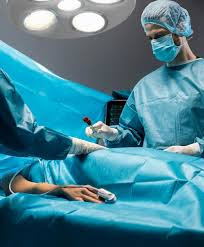Latest Advances in Liver Disease Diagnosis and Monitoring
Liver disease is a growing global health concern, affecting millions each year. From fatty liver and hepatitis to cirrhosis and liver cancer, early and accurate diagnosis plays a crucial role in treatment success. In recent years, medical science has made great strides in liver disease diagnostics and monitoring, offering non-invasive, real-time, and more precise solutions.
In this blog, we explore the latest technologies transforming liver care and why consulting a liver transplant physician can be essential for patients with advanced or complex liver conditions.
Why Early Diagnosis of Liver Disease Matters
Liver diseases often progress silently, with symptoms appearing only in advanced stages. Timely diagnosis helps prevent irreversible damage, guides personalized treatment, and improves survival rates—especially in conditions like hepatocellular carcinoma or end-stage liver failure.
Common early symptoms to watch for include:
-
Fatigue and weakness
-
Abdominal discomfort or swelling
-
Jaundice (yellowing of skin and eyes)
-
Unexplained weight loss
-
Dark urine or pale stools
Traditional Diagnostic Tools for Liver Disease
Before diving into newer technologies, it's important to understand the standard diagnostic tools used:
-
Liver Function Tests (LFTs): Assess enzymes and proteins to evaluate liver performance.
-
Ultrasound & CT Scan: Imaging to detect structural abnormalities like tumors or fatty liver.
-
Liver Biopsy: A small tissue sample analyzed for inflammation, fibrosis, or cancer.
-
FibroScan (Transient Elastography): A non-invasive method to assess liver stiffness (used for fibrosis and cirrhosis).
Latest Advances in Liver Disease Diagnosis
Medical research and innovation have led to the development of more advanced, accurate, and patient-friendly diagnostic tools:
1. Multiparametric MRI
This cutting-edge imaging technique combines multiple MRI sequences to assess liver fat, iron, inflammation, and fibrosis—all in a single scan. It is particularly valuable for monitoring non-alcoholic fatty liver disease (NAFLD) and chronic hepatitis.
2. Liquid Biopsy and Circulating Biomarkers
Instead of relying solely on tissue samples, liquid biopsies analyze blood for liver-specific biomarkers, including microRNA, DNA methylation, and circulating tumor cells. It offers a non-invasive way to detect liver cancer at an early stage.
3. AI-Based Imaging and Predictive Analytics
Artificial intelligence tools now assist radiologists and hepatologists in interpreting liver scans. AI can detect subtle changes in liver texture and structure, improving early detection and reducing human error.
4. Genomic and Metabolic Profiling
Precision medicine has entered hepatology. Genetic testing and metabolic profiling help understand individual disease risk, especially in hereditary liver conditions like hemochromatosis and Wilson’s disease.
5. Elastography Advancements
Shear wave elastography and magnetic resonance elastography offer improved accuracy over earlier methods, enabling clinicians to monitor liver fibrosis progression non-invasively.
Advances in Liver Disease Monitoring and Management
Monitoring liver disease is just as critical as diagnosing it. Here are the key areas seeing innovation:
✅ Remote Monitoring Devices
Wearable biosensors can now track patient vitals, hydration levels, and medication adherence in real time—especially helpful for post-transplant liver patients or those with chronic cirrhosis.
✅ Non-Invasive Scoring Systems
Advanced fibrosis scores using AI and machine learning reduce the need for repeated biopsies and improve patient compliance.
✅ Telehealth and Digital Health Portals
Virtual consultations with a liver transplant physician or hepatologist are now more accessible, especially for patients in remote areas. Patient portals help track lab results, medication schedules, and lifestyle guidance.
The Role of a Liver Transplant Physician
In cases where liver function continues to decline despite treatment, the guidance of a liver transplant physician becomes vital. These specialists evaluate transplant eligibility, coordinate pre-operative care, and ensure proper post-transplant monitoring.
A liver transplant physician also works closely with hepatologists, radiologists, and surgeons to provide a multidisciplinary approach. They help:
-
Identify when a transplant is the only option
-
Prepare the patient and family for surgery
-
Manage long-term immunosuppression and lifestyle care
-
Monitor for post-transplant complications
How Patients Benefit from Advanced Liver Care
With these diagnostic advances, patients now have:
-
Faster and earlier diagnosis
-
Fewer invasive procedures
-
Customized treatment plans
-
Improved long-term survival
-
Better access to care through digital health tools
Final Thoughts
Liver disease diagnosis and monitoring have entered a new era, driven by technology and precision medicine. Early detection, AI-driven imaging, and non-invasive tools are improving outcomes and quality of life for patients worldwide.
If you're experiencing liver-related symptoms or managing a chronic condition, speak with a liver transplant physician or hepatology expert to explore the most up-to-date diagnostic options available.




Comments
Post a Comment